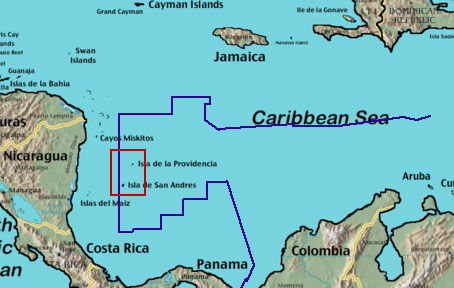
After being on the backburner for over three decades, The Hague is finally ruling on a spat between Colombia and Nicaragua over a set of islands that includes San Andrés, Providencia, and Santa Catalina in the Caribbean Sea. While Nicaragua will argue that the border between the states should be located between its coast and Colombia’s—and not be defined by the 82nd meridian—there is little chance that Nicaragua will succesfully claim sovereignty over the entire archipelago, and the International Court of Justice’s (ICJ) decision by the end of 2012 will set an important precedent for maritime disputes across Latin America.
Aside from deciding where the new border will be, the real focus of the dispute will center on the inhabitants of the islands, who have chosen for over a century to be part of Colombia. A clear ruling would not only settle the difference between these two countries, but also help encourage long-overdue development and security. This will hopefully allow the islands to enjoy the wealth of the region’s untapped natural resources. It should also act as an important model for other such border disputes when two countries can’t reach a mutual agreement, something ICJ encourages before filing claims at the higher court.
